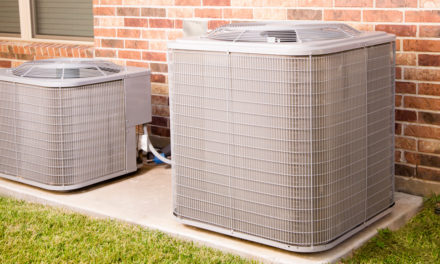- How to prepare for an inspection
- The responsibilities of the owner and the inspector
- How to perform a visual inspection
How to perform inspections and testing on the following:
- Wet pipe systems
- Dry pipe systems
- Anti-freeze loops
Speakers:

Bob Guthrie
Operations Manager, Fire Repairs and Service
Cintas Fire Protection National Accounts

Lee Daniel
Director of Fire Protection
National Accounts for Cintas
What is NFPA 25 and how is the content laid out?
NFPA 25 covers the standard for the inspection, testing and maintenance of water-based fire protection systems. Generally, most NFPA documents follow a format similar to the following in regard to the first three chapters, and the remaining chapters are specific to NFPA 25.
- Chapter 1: Administration (Scope, Purpose, Application)
- Chapter 2: Referenced Publications
- Chapter 3: Definitions
- Chapter 4: General Requirements
- Chapter 5: Sprinkler Systems
- Chapter 6: Standpipe and Hose Systems
- Chapter 7: Private Fire Service Mains
- Chapter 8: Fire Pumps
- Chapter 9: Water Storage Tanks
- Chapter 10: Water Spray Fixed Systems
- Chapter 11: Foam-Water Sprinkler Systems
- Chapter 12: Water Mist Sprinkler Systems
- Chapter 13: Valves, Valve
Components and Trim - Chapter 14: Obstruction Investigation
- Chapter 15: Impairments
What is the scope of NFPA 25?
An NFPA 25 inspection applies to a properly installed fire sprinkler system only and is the standard for inspecting, not for installing. Systems other than those, which have been properly installed, are beyond the scope of NFPA 25. An inspection is a visual inspection performed from the ground.
Why do sprinkler systems fail?
The NFPA reports that most system failures are due to lack of proper maintenance. Here, we go over common reasons for system failures and the purpose of NFPA 25 inspection requirements to help reduce them, as well as owner and contractor responsibilities, including drawings, record-keeping and notification of appropriate parties. One of the most important aspects of the inspection process is paperwork. Always keep detailed records and include photos if necessary.
What are the highlights of NFPA 25 inspection requirements?
Chapter 5 covers sprinkler systems and the minimum requirements for routine inspection and maintenance. This chapter and webinar section outlines:
- Sprinklers systems
- Pipe & Fittings
- Hangers & Seismic Braces
- Gauges
-
Waterflow Alarms
-
Supervisory Switches
-
Hydraulic Nameplate
How are sprinklers inspected and what types of things are being looked for?
Per NFPA 25 5.2.1.1, sprinklers shall be inspected from the floor. Per NFPA 25 5.2.1.1.2, a sprinkler that shows signs of the following shall be replaced: leaking, painted, corroded, damaged, loaded or in the improper orientation (side wall, upright, pendent, etc.). Further, per 5.2.1.1.3, glass bulb sprinklers that are empty shall be replaced. Here we explore these issues in more detail.
What is inspected in regard to pipe/fittings and hangers/seismic bracing?
These generally follow the same guidelines as sprinklers, including visual inspection from the floor and that concealed items are not to be inspected. Here, we talk in more detail about why that is, potential repair recommendations and examples.
How often are gauges, waterflow alarms, supervisory signal initiating devices, and hydraulic design information signs to be inspected?
Gauges are to be inspected on a weekly and quarterly basis. Breaking this down by system, we land on:
- Wet pipe systems: Gauges are to be visually inspected quarterly
- Dry pipe systems: Gauges are to be visually inspected weekly
- Dry systems with supervised air: Inspect gauges weekly
- Dry systems protecting freezers: Compare gauges at compressor and above dry pipe valve clapper to check for ice blockage in air line
Are there any specific component inspections that are not part of chapter 5?
The following inspections of specific components or procedures will be found in their own chapters of NFPA 25:
- Valves and Connections: Chapter 13
- Obstruction Investigations: Chapter 14
- Impairments: Chapter 15
- Hose Connections: Chapters 6 and 13
What are some of the requirements around sprinkler testing and types?
Sprinklers shall be replaced or a representative sample shall be tested by a recognized testing laboratory. This includes sprinklers that have been in service for 50 years or more. Retesting is done at 10-year intervals. When sprinklers reach 75 years, they shall be tested at 5-year intervals. Sprinklers manufactured prior to 1920 shall be replaced. A representative sample consists of not less than 4 sprinklers or 1% of the total number of installed sprinklers of a particular type. If one sprinkler tested fails the testing, all of that type of sprinkler shall be replaced. Here, we’ll also dive in deeper to these NFPA 25 requirements as well as into fast-response, temperature-rated and dry sprinklers, and sprinklers exposed to harsh conditions.
How does testing apply to alarm devices and anti-freeze systems?
Pressure switches and mechanical waterflow detection shall be tested on a quarterly basis. Vain type flow switches shall be tested on a semi-annual basis. All testing shall be performed using the inspector’s test connection, with the exception that the bypass connection may be used if freezing conditions exist.
Annually, before the onset of freezing weather, the anti-freeze solution shall be tested using the procedures outlined, with the caveat that there have been significant changes to the use and concentration levels of anti-freeze at this time. Here, we discuss this in more detail, but please reference NFPA 25 to ensure understanding of the latest procedure.
What procedures should be followed when it comes to sprinkler maintenance and replacement?
When replacing sprinklers, replace with like sprinklers only, including:
- Style
- Orifice and K factor
- Temperature rating
- Coating
- Deflector style (pendant, upright, etc.)
- Design requirements
- 0 – 300: no less than 6 sprinklers
- 301 – 1,000: no less than 12 sprinklers
- 1,001 or more: no less than 24 sprinklers
TELS can help supplement your fire protection needs with proactive work order, task and scheduling management, service technician support, and compliance expertise and best practices. TELS Platform users can implement the sprinkler assessment inspection task and others directly in their accounts. For more detailed assistance managing your corporate or regional program, visit TELS Fire Protection or call 888-433-3224.



